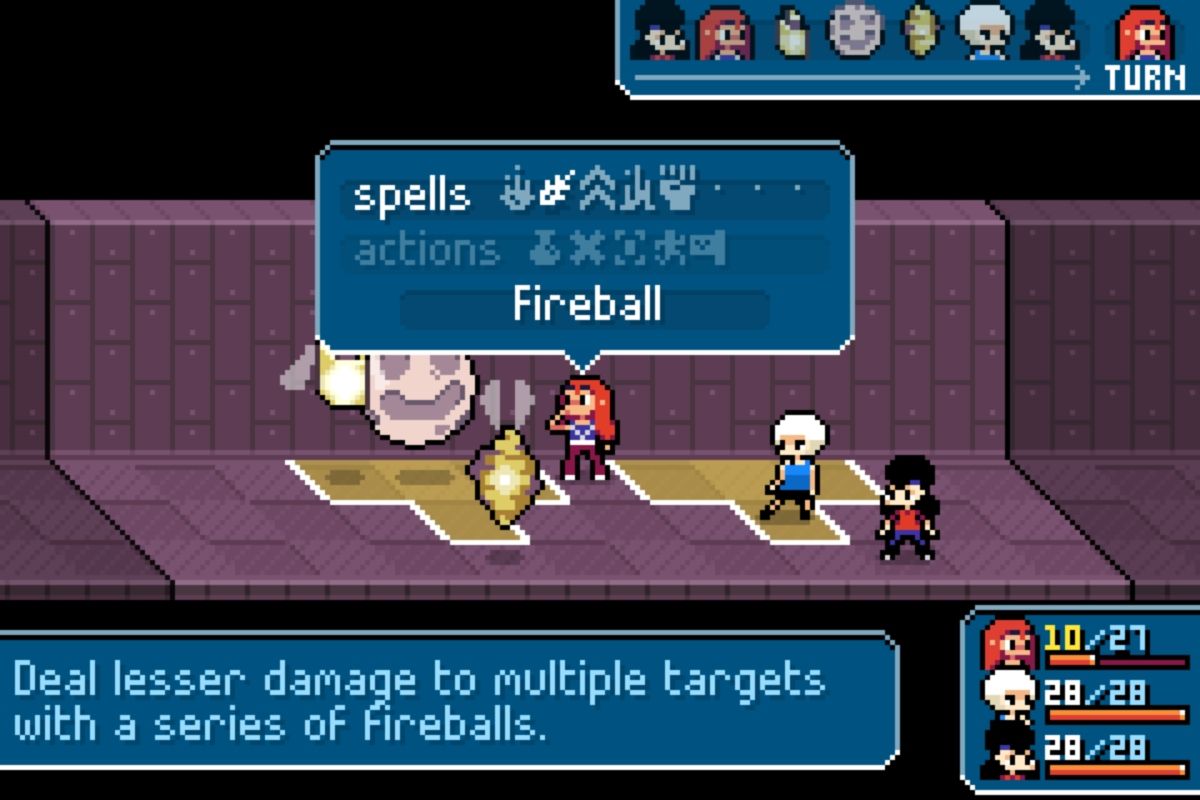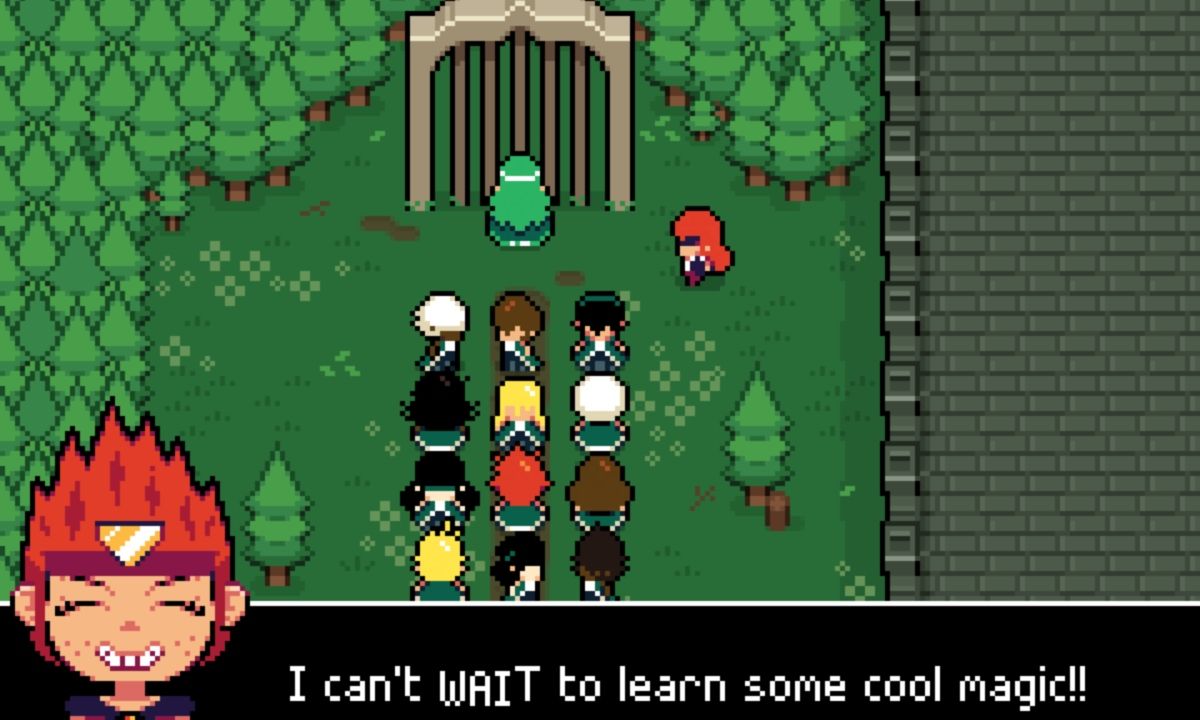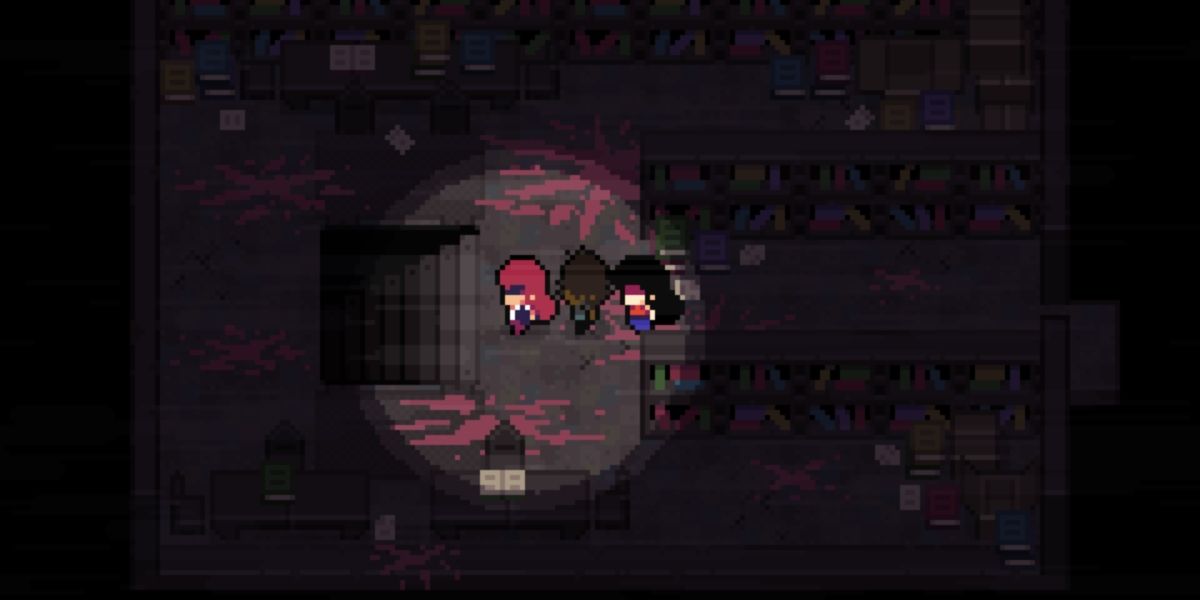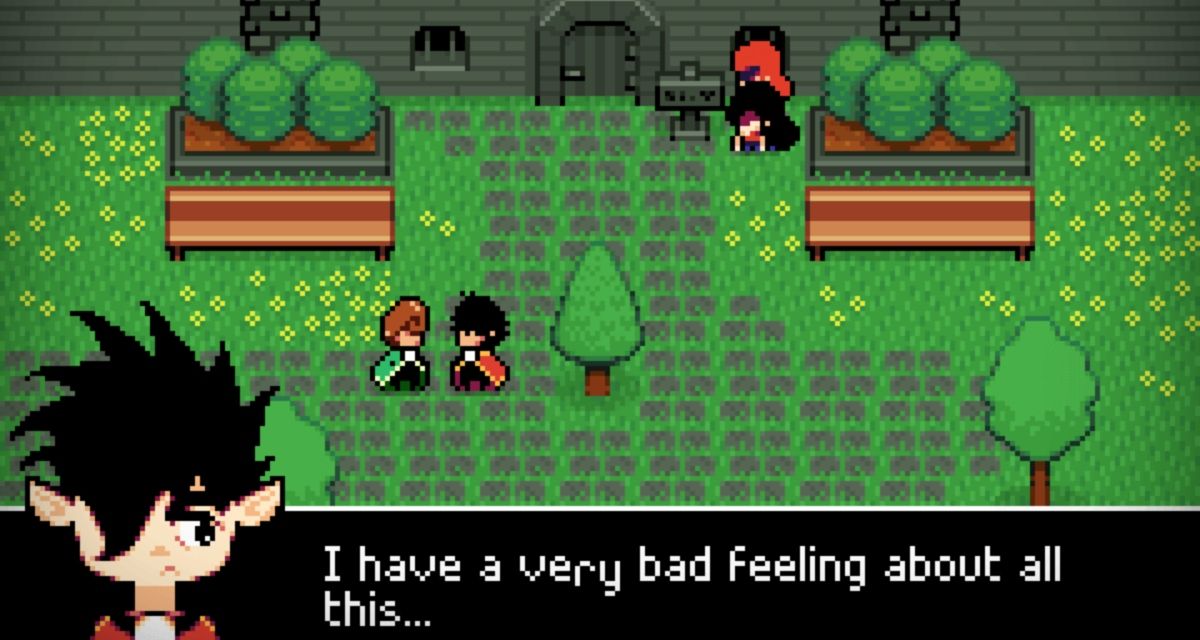With graphics that would look at home on the SNES (in the best possible way), Happy Ray Games' Ikenfell will certainly draw comparisons to classics like Earthbound and even modern hits like Undertale. But while it may not have the flashiness or name recognition that games like those have developed over the years, Ikenfell stands out for its unique combat mechanics and compelling magical world full of mysteries and heartfelt stories.
Ikenfell tells the story of Maritte Hildegaard, a girl trying to get to Ikenfell School of Magic to find out what happened to her sister Safina, who did not return home for the summer as expected. She is almost immediately stopped by a group of guards protecting the school, who are tasked with keeping Ordinaries (those without magic) like her away. However, while defending herself, Maritte begins exhibiting fiery magic, transforming a battle against enemies into a training session in which the guards teach Maritte the game's most important skill: hit timing.
Ikenfell's combat is turn-based and tactical, taking place on a grid. Here, the game's most unique mechanic, hit timing, comes into play. Unlike other RPGs, the game doesn't have an MP or mana system to keep track of. Instead, the power of moves is tied to how well players can time button presses based on visual cues unique to each move. While poor timing will still result in a hit, it'll likely do a negligible amount of damage. Getting close will get you a "Nice," while perfect timing will reward you with a "Great." The same applies to defense: perfect timing will minimize damage and prevent secondary status effect like poison, while missing a button press will result in more lost hit points and stronger debuffs.
Hit timing is simultaneously Ikenfell's most engaging and frustrating feature. On one hand, it keeps players active and on their toes at all times. This isn't a turn-based game where you can sit back and watch when it's the enemy's turn; you have to be ready to defend at any moment. It provides some agency, giving players control over how hard attacks hit and adding a level of skill to a genre that's often limited to selecting attacks and waiting.
However, knowing when to press the button can be frustrating, especially when trying out a new move or dealing with a new kind of enemy. Each move uses a different visual cue to indicate when you need to press the button, some of which are more obvious than others. And while players will get used to certain animations and patterns, new moves and ones that are only useful under certain circumstances can really throw the player off. It's not an exaggeration to say that hit timing is the difference between victory and defeat when the damage taken can be three or 13 depending on how well you time your button presses.
For those looking for a more traditional RPG experience, Ikenfell features three different timing modes: manual, semi-auto and auto. The latter two make the game easier by downplaying (or eliminating) the need to perfect your timing. It's a nice option, allowing for more flexibility and accessibility, but there are some other flaws that can make combat unnecessarily punishing. For one, due to the grid style and camera position, it's possible for a large enemy in the foreground to block enemies behind it, making it even harder to time a button press. Also frustrating are moves that hit multiple times and require separate button presses to perform or block, as these often don't follow a consistent rhythm.
Regardless of its shortcomings, Ikenfell's combat is enjoyable enough to support its mysterious world and lovable characters. Most of the main characters are interesting and three-dimensional with distinct, complex relationships and histories with one another. It also boasts a diverse cast with several POC and LGBTQ characters, notably two nonbinary characters who use they/them and ze/zir pronouns respectively. As the game goes on and the mystery deepens, so do the characters and their arcs. While the game centers on Maritte, players learn a lot about the Ikenfell students she meets along the way and their relationships and rivalries with her sister.
While she may not be there in person, Safina is clearly defined through flashbacks and conversations with those she interacted with at school. She's brilliant, outspoken and rebellious, displaying a self-assuredness that isn't often afforded to "smart girl" characters. She can also be insensitive and brash, making it clear why she had lots of friends and enemies at Ikenfell. When Maritte shows up, no one even knows that Safina has a sister, adding to Maritte's feeling of rejection by the magical world.
Though she now has powers, growing up as an Ordinary has made Maritte feel like she doesn't belong at Ikenfell. This sets up an interesting tension between the Magical and Ordinary worlds. Some comments from students and professors point to inequities and negative attitudes towards those without magic, a dynamic that the game doesn't really dive into. Instead, Maritte's Ordinary status is treated as a personal challenge to overcome in the same way other characters must deal with their own trauma rather than a problem caused by systemic issues at play.
But while the Magical-Ordinary divide may leave something to be desired, the way the game deals with the theme of trauma is noteworthy. Ikenfell tells an important story about the importance of dealing with trauma rather than repressing it. A late-game event makes it clear that relying on unhealthy coping mechanisms, even with the goal of protecting others, only ends up causing more pain for everyone involves.
Ikenfell's story can go to dark places, but it's set in a lively and colorful world with plenty of puzzles to solve. However, not all of them are particularly intuitive. While most can be solved using logic and environmental clues, some provide few hints at all, instead forcing players to rely on trial and error or attempting to interact with every item in a room in hopes of causing any change.
The game balances darkness and quirkiness, providing some moments of levity through battles with sentient books and pairs of pants. This is all elevated by a mostly upbeat soundtrack from aivi & surasshu, composers best known for their work on Steven Universe. The music is just as charming as you'd expect from the duo, and some of the character themes stand out as particularly memorable, covering a variety of genres that fit the individual in question. However, there are a few moments when these upbeat themes come in to signal a character's sudden arrival during a tense moment, breaking the mood. There are also some moments where the game goes completely silent, and while this makes sense for, say, sneaking through a forest while trying to avoid detection, other times, it just feels like there's something missing.
If you approach Ikenfell expecting a game about being a student attending classes at a magical school, you may be a bit disappointed. Instead, this is a linear, narrative-based game that focuses on solving a mystery using a unique combat system. And while it may not be what you expect, it certainly offers an engaging and emotionally fulfilling experience. The option to tailor the combat difficulty to your own needs makes it far more accessible, though it would have been nice to see some of that flexibility extend to the puzzles. But where Ikenfell really shines is in its storytelling and characters. It may not be perfect, but playing through the story and rolling credits on the game is worth it if only for some end-game surprises.
Ikenfell is now available on Steam, the Humble Store, Nintendo Switch, PlayStation 4 and Xbox One. A review copy was provided by the publisher.





